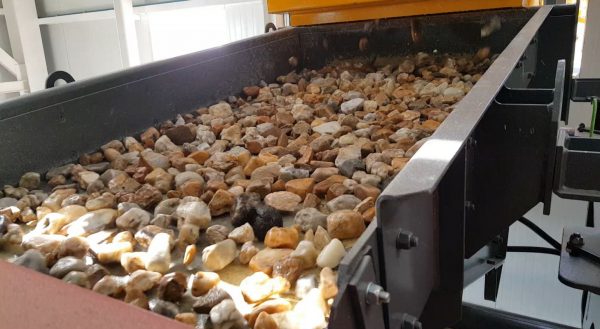
With a positive outlook for the quartz market, the challenge for mining companies servicing this sector lies in the purity of this mineral.
Customers in the metallurgical and engineered stone industries require a reliable supply of quartz at a consistent purity.
Tomra’s patented multi-channel laser sorting technology seeks to unlock the full potential of quartz deposits with a structural approach.
Utilizing a scattering effect of multiple laser beams, it can be used to separate quartz rocks from waste material
Utilizing a scattering effect of multiple laser beams, it can be used to separate quartz rocks from waste material.
Quartz or quartz veins will appear as glowing crystals because quartz returns laser light over a larger area, while other materials will remain dark.
The laser sorter is a gravity system, scanning both sides of the material with multiple characteristics processed simultaneously.
Laboratory tests and field experience suggest an increase of 20% in the recovery of valuable rocks with improved product quality.
“The advantages for mine operations are multiple, from a longer life of the mine to lower operating costs and a reduction of waste, with consequent lower haulage costs. It also enables them to guarantee consistent high-quality of product to their customers,” Jens-Michael Bergmann, industrial mineral segment manager at Tomra Sorting Mining, said in a release.
The company’s laser sorting technology also has environmental benefits, due to reduced waste and water use and eliminates the need for hand picking, positively impacting workplace health and safety.
Tomra colour and laser sorters can be deployed in combination to sort by colour, composition and size: companies that serve different industries require precise mineral sorting due to customer requirements.
Mikroman Mining uses a combination of the company’s laser and colour sorters to differentiate products based on four qualities.
These precise distinctions, resulting in higher product quality, were not possible before the addition of the Tomra machines.
Tomra Sorting Mining designs and manufactures sensor-based sorting technologies for the global mineral processing and mining industries.
(This article first appeared in the Canadian Mining Journal)